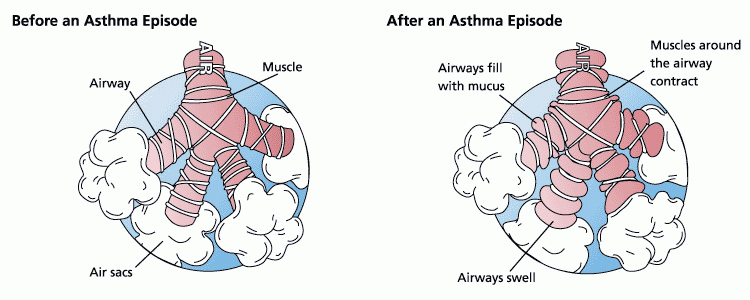Wheeze pathophysiology: Difference between revisions
No edit summary |
Ochuko Ajari (talk | contribs) No edit summary |
||
| Line 2: | Line 2: | ||
{{Wheeze}} | {{Wheeze}} | ||
{{CMG}}; {{JFS}} | {{CMG}}; {{JFS}} | ||
== Pathophysiology == | == Pathophysiology == | ||
| Line 16: | Line 14: | ||
== References == | == References == | ||
{{Reflist|2}} | {{Reflist|2}} | ||
[[Category:Medical signs]] | [[Category:Medical signs]] | ||
| Line 24: | Line 19: | ||
[[Category:Signs and symptoms]] | [[Category:Signs and symptoms]] | ||
[[Category:Pulmonology]] | [[Category:Pulmonology]] | ||
[[Category:Primary care]] | |||
[[Category:Needs overview]] | |||
{{WH}} | |||
{{WS}} | |||
Revision as of 14:47, 17 April 2013
|
Wheeze Microchapters |
|
Diagnosis |
|---|
|
Treatment |
|
Case Studies |
|
Wheeze pathophysiology On the Web |
|
American Roentgen Ray Society Images of Wheeze pathophysiology |
|
Risk calculators and risk factors for Wheeze pathophysiology |
Editor-In-Chief: C. Michael Gibson, M.S., M.D. [1]; Associate Editor-In-Chief: John Fani Srour, M.D.
Pathophysiology
Wheezes occupy different portions of the respiratory cycle depending on the site of airway obstruction and its nature. The proportion of the respiratory cycle occupied by the wheeze roughly corresponds to the degree of airway obstruction.Template:Rf,Template:Rf Bronchiolar disease usually causes wheezing that occurs in the expiratory phase of respiration. The presence of expiratory phase wheezing signifies that the patient's peak expiratory flow rate is less than 50% of normal.Template:Rf Wheezing heard in the inspiratory phase on the other hand is often a sign of a stiff stenosis, usually caused by tumors, foreign bodies or scarring. This is especially true if the wheeze is monotonal, occurs throughout the inspiratory phase (ie. is "holoinspiratory"), and is heard more distally, in the trachea. Inspiratory wheezing also occurs in hypersensitivity pneumonitis.Template:Rf Wheezes heard at the end of both expiratory and inspiratory phases usually signify the periodic opening of deflated alveoli, as occurs in some diseases that lead to collapse of parts of the lungs.
The location of the wheeze can also be an important clue to the diagnosis. Diffuse processes that affect most parts of the lungs are more likely to produce wheezing that may be heard throughout the chest via a stethoscope. Localized processes, such as the occlusion of a portion of the respiratory tree, are more likely to produce wheezing at that location, whence the sound will be loudest and radiate outwardly. The pitch of a wheeze does not reliably predict the degree of narrowing in the affected airway.Template:Rf
Wheezing can also occur in people who are deconditioned.
